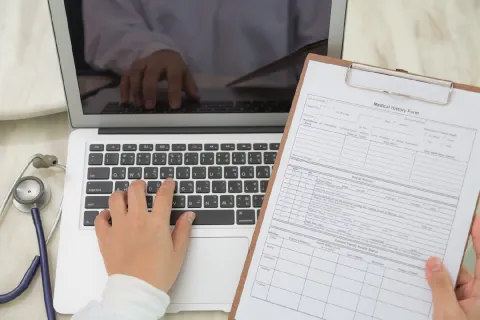
The global pharmaceutical market is expected to reach a staggering $1.5 trillion by 2025, fuelled by continuous innovation and a growing demand for life-saving treatments. The electronic Common Technical Document (eCTD) submission process plays a pivotal role in achieving this goal.
The eCTD submissions can significantly reduce review times for Regulatory agencies. A study by the International Council for Harmonisation (ICH) revealed that eCTD submissions cut review times by an average of 30% compared to traditional paper submissions. This translates to faster product approvals, allowing patients to access critical medications sooner. However, navigating eCTD submissions can be a complex process, requiring a thorough understanding of Regulatory requirements and effective communication with health authorities.
Explore Our eCTD Submission Services
Request a Consultation
This comprehensive blog empowers you to master the eCTD submission process, ensuring compliance, accuracy, and a smoother experience with Regulatory agencies.
Tailoring Your Approach for Key Regulatory Bodies:
Let’s delve into interaction with the following prominent health authorities:
- U.S. Food and Drug Administration (FDA):
- Regulates pharmaceuticals, medical devices, food, and cosmetics in the US.
- Submit eCTD applications for INDs, NDAs, ANDAs, and other Regulatory requirements.
- Ensure compliance with FDA's ESG requirements and specific eCTD guidance documents.
- European Medicines Agency (EMA):
- Oversees medicinal product evaluation and supervision within the European Union.
- Submit eCTD applications for MAAs, CTAs, and variations to existing marketing authorizations.
- Familiarize yourself with EMA's eSubmission Gateway and Web Client, adhering to eCTD specifications outlined in the EU IG.
- Health Canada:
- Regulates pharmaceuticals, medical devices, and natural health products in Canada.
- Submit eCTD applications for NDSs, ANDSs, and DELs.
- Comply with Health Canada's electronic submission requirements, including CESG or authorized methods.
- Japan Pharmaceuticals and Medical Devices Agency (PMDA):
- Responsible for pharmaceutical and medical device approvals in Japan.
- Submit eCTD applications for NDAs, MAAs, and CTNs.
- Adhere to PMDA's eCTD specifications and utilize their electronic submission portal.
Streamlining Your eCTD Submission Journey:
The core steps remain the same, but the language is more action-oriented:
- Preparation: Gather all essential documents, including module 1, and ensure adherence to relevant guidelines.
- Compilation: Organize documents following the eCTD structure, including the backbone file and regional information.
- Validation: Leverage health authority-provided validation tools to verify submission integrity and completeness.
- Submission: Submit the eCTD package via the designated electronic submission gateway or portal of the respective health authority.
- Follow-up: Proactively monitor submission status and address any queries or deficiencies from the health authority promptly.
Navigating eCTD submissions to health authorities requires meticulous planning, Regulatory compliance, and clear communication with Regulatory agencies. An expert in the domain like Freyr can streamline document preparation, handle validation using specialized tools, and mitigate potential risks. By acting as a communication bridge and streamlining processes, Regulatory partners can expedite approvals and get your products to market faster.









